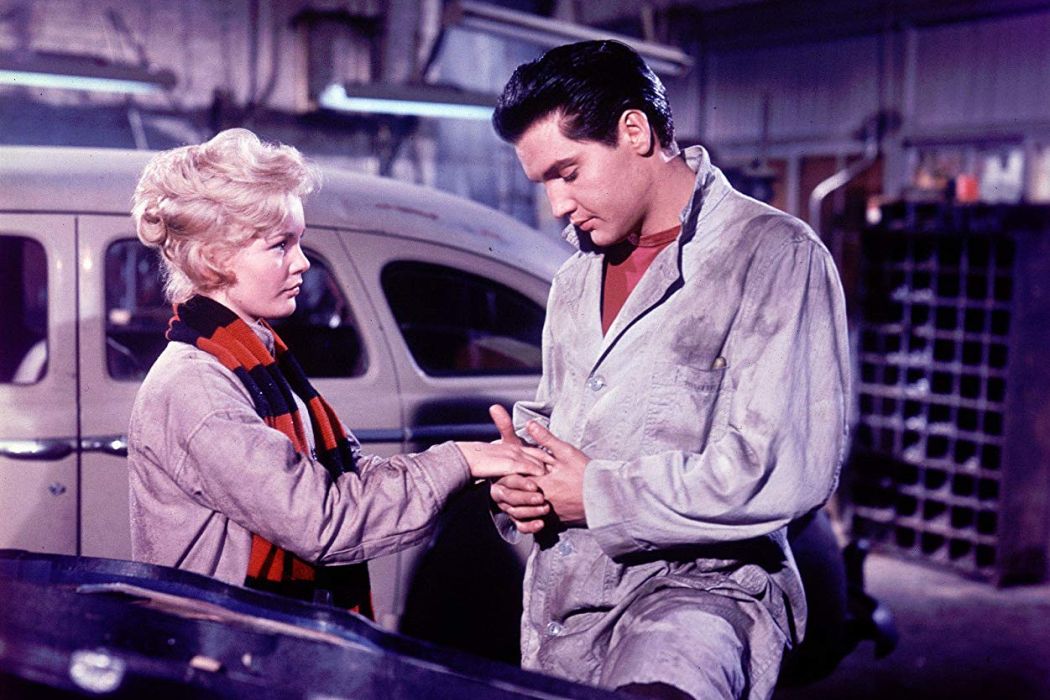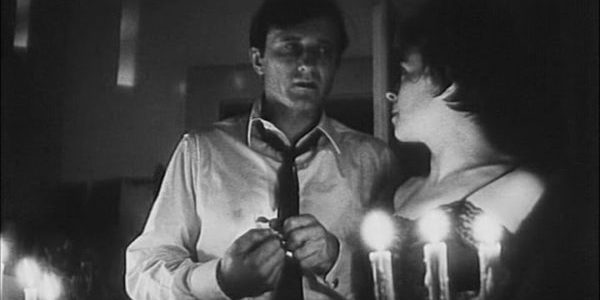Video Dispatches: WILD IN THE COUNTRY, THE EAR & KILLER CROCODILE

Midwesterner, movie lover, cinnamon enthusiast.
Video Dispatches is a regular column covering recent home video releases.
Wild in the Country (1961) – Twilight Time

Wild in the Country is the fourth Phillip Dunne film to enter Twilight Time’s catalog, after Hilda Crane, Blue Denim and Ten North Frederick, an underwhelming title I recently reviewed. In the booklet essay for Wild in the Country, an Elvis Presley picture about rebellion, talent and falling in love, Mike Finnegan bridges all four Dunne films thematically by their interest in “societal outcasts” and “kids in trouble.”
He also nails the problem with Wild in the Country: there’s a central tension between the arch of Elvis’ Glenn, as a rebellious youth placed into a rehabilitating system with a burgeoning talent for writing, and the melodrama between him and his case worker (Hope Lange). Although the former includes lovely performances from Millie Perkins and Tuesday Weld — both playing Elvis‘ love interests — those surrounding scenes don’t hold a candle to the passion and tenderness Dunne musters during the Sirkian melodrama of the affair between Elvis and Lange, particularly when they find themselves stuck in a motel. Their scenes are so ablaze with emotion that they nearly overshadow the film’s surrounding flaccid tissue.
However, some of that lackluster material can’t be so bad when it’s 1) shot so well by William C. Mellor, and 2) contains the occasional Elvis song, most importantly when he sings “In My Way” to Weld’s Noreen while strumming an acoustic guitar on the wooden staircase outside her apartment. Finnegan calls it (and the other songs) a “pleasant distraction,” which it is, but undersells my whiplash at its modest but intense beauty.
The Ear (1970) – Second Run

Second Run continue their admirable and admirably thorough effort to release nuggets of Czech cinema that have gone unseen for far too long, like The Ear by Karel Kachyna, which suffered nearly two decades behind lock and key.
The Ear’s conceit — a middle-aged married couple fight all night while trying to find the surveillance bug the state’s put in their house — draws immediate, and fairly rote, juxtaposition with three American films — Who’s Afraid of Virginia Woolf?, Faces and The Conversation, which Kachyna anticipated rather than echoed. These comparisons aren’t misplaced, and while I prefer those three American films, The Ear remains its own film due to Kachyna’s distinct eye and his attention to the state’s distinct politics.
On the disc’s introduction, Czech cinema expert Peter Hames mentions Kachyna’s specific interest and history with photography, which is foregrounded throughout his filmography. Indeed, much of The Ear is stunningly shot, leaning heavily on candlelight and streetlight to evoke the immediately unknown. Hames also clarifies that Kachyna wasn’t a part of the Czech New Wave, despite often described as such, but the previous generation. He adds that it’s important to note that not all of the Czech films from the 1960s should be considered New Wave films. The scholarly insights of his lengthy intro, which give less-than-educated viewers like myself some political context, pair well with the Projection Booth commentary (now becoming a regular addition for Second Run discs), which more often than not is focused on formal and emotional insights.
Second Run go beyond their due diligence and also include a 22-minute short, The Uninvited Guest, by Kachyna’s protegee Vlastimil Venclik. The film pairs well with The Ear as it also plays in the sphere of political surveillance and was also previously banned by the state.
Killer Crocodile (1989) – Severin

Fabrizio De Angelis’ Italo-Schlock Jaws rip-off, Killer Crocodile, sounds like, and is marketed as an unintentional hoot, so I was fairly surprised when the film turned out to be just a decent low-budget creature feature. Of course, if bad Italian dubs and shitty acting are how you and your friends get your kicks, it’s sure to yield some guffaws, but I saw no real reason to treat this film as a failure.
And I think Severin agree. The disc has a handful of newly-shot interviews with the two primary actors, Pietro Genuardi and Richard Anthony Crenna, the cinematographer Federico Del Zoppo and the makeup and FX artist Gianneto De Rossi.
De Rossi colors De Angelis as a workman-like director who viewed filmmaking as a profession more than his artform, and speaks to his ability to work with thrift. He downplays the crocodile model they built but I think it works just fine, and he credits De Angelis with being able to make it appear animated. Genuardi also characterizes De Angelis as a non-stop worker, but one who’s more talented than many renowned directors.
Del Zoppo, whose compositions of the Santo Domingo swamp are often lovely, talks about the location as being “movie-like” and indeed, the setting does a lot for the film, and gave him plenty of atmosphere to capture. Del Zoppo’s contribution to the disc are undoubtedly the most useful, and by including pieces like this, Severin really highlight the skill and craft that go into these films. Whether they’re considered low-brow schlock or not, the filmmakers care, and in the case of Killer Crocodile, it’s not hard to see that shine through.
Does content like this matter to you?
Become a Member and support film journalism. Unlock access to all of Film Inquiry`s great articles. Join a community of like-minded readers who are passionate about cinema - get access to our private members Network, give back to independent filmmakers, and more.













